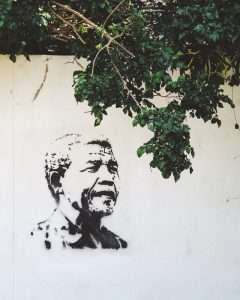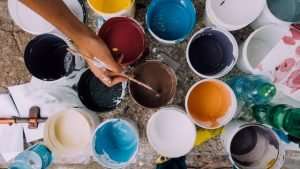The Jewish Museum in New York is spearheading a campaign to retrieve millions of items plundered from Jews by the Nazis during World War II, including paintings and sculpture.
The museum has teamed up with the International Association of Art Critics, an organization representing more than 4,000 critics, curators and art historians, to persuade museums across Europe to return cultural treasures that were looted or extorted from Jews by the Nazis.
It is estimated that some 1.5 million pieces of art were taken from Jews during the Holocaust. In recent years, a handful of museums have returned those works after lengthy negotiations. But many more remain in European collections because of legal complexities and competing claims on specific works.”
The campaign comes as the heirs of Max Stern — a Holocaust survivor who amassed a world-class collection of African art — are waging their own legal battle against the Los Angeles County Museum of Art over three pieces from that collection. The museum acquired those works in 1976, but it says it was unaware at the time that they had been plundered from Mr. Stern’s collection by the Nazis.>>>
The New York Museum of Modern Art is one of the few museums in the world that houses works confiscated by the Nazis during World War II, but officials at the museum have recently decided to return those controversial paintings to their original owners in an effort to help avoid a court battle.
The museum will return four paintings by Paul Cézanne, Pablo Picasso and Amedeo Modigliani as well as a drawing by Henri Matisse to the heirs of their original owners. The question now is whether or not this landmark decision will be followed by other major art institutions that house Nazi-confiscated pieces on display.
Tate Modern in London, for example, which holds about 100 works that were looted from Jewish families or sold under duress, hasn’t returned any pieces since it opened in 2000. And though there are many advocates for returning the artwork, leaders at some institutions have cited legal concerns as well as ethical questions.
While U.S. museums and collectors didn’t participate in stealing art during World War II, they did buy Nazi-looted pieces from European dealers who then sold them off with forged provenances. As a result, many U.S. museums still hold hundreds of paintings that may very well be stolen property.
On Monday, the Museum of Modern Art in New York announced that it would return a painting by the Dutch modernist artist Kees van Dongen to the descendants of its original owner. The painting, “Portrait of Josette Gris,” was looted from its Jewish owner by the Nazis in 1940 and purchased at auction by MoMA in 1941.
Taken together, these decisions reflect a growing movement within museums to address — and, more importantly, to begin to fix — their troubling pasts. Institutions are now coming to grips with what they bought or traded under suspicious circumstances during World War II, when such transactions helped fund the Nazi war effort.
“As we approach the 70th anniversary of the end of World War II, we look back with deep regret on how that war led to the confiscation and dispersal of cultural property from many parts of Europe,” Glenn D. Lowry, director of MoMA, said in a statement. “We are grateful for this opportunity to correct one such tragedy.”
Some of the art that was looted from European Jews by the Nazis during World War II has been returned to its rightful owners, but most of it is still in museums and private collections. In his article “Stolen Art, Stolen Identities” (Sept. 9), Steve Inskeep reported on the efforts of the Washington Conference on Holocaust-Era Assets to get museums and private collectors to cooperate in returning Nazi-looted art.
In the past few years, many art museums have agreed to return such art but have resisted setting up a central repository for it because they want to keep their collection intact. The conference’s executive director, Greg Schneider, is hoping that the New York Museum of Modern Art will agree to host a “museum of recovered artwork,” so that cultural artifacts can be preserved and exhibited in one place. The museum’s director, Glenn D. Lowry, who did not take part in Mr. Inskeep’s interview with him (but who did give him access to its archives), believes that exhibiting all this artwork would be like “a huge tombstone” and would be disrespectful toward the creators of these masterpieces.
The German government created a foundation 15 years ago whose job was to locate stolen art, return it or compensate its owners and establish
The heavily publicized campaign to pressure Russia to return artworks stolen by the Nazis during World War II has swelled in recent months, thanks to a new report released Tuesday by The Commission for Art Recovery (CAR), a New York-based nonprofit organization.
Titled “The Spoils of War,” the report details the theft of significant artwork from Jewish families by Nazi forces during World War II. It includes more than 1,200 pieces of art, including works by such famous artists as Max Beckmann, Marc Chagall and Paul Klee. Many of these works are currently housed in museums across Russia and are visited by millions every year.
As part of its campaign to bring back these artworks, CAR has provided ammunition for several lawsuits filed against museums in Europe and the U.S. since Jan. 1, 2005—the date when the Washington Conference Principles on Nazi-Confiscated Art came into effect. These principles require that states parties to the Washington Conference on Holocaust-Era Assets take steps to facilitate fair and just settlement of claims related to Nazi-confiscated or looted art.
The Washington Conference Principles have been signed onto by 37 countries; they were established in 1998 at an international conference held in Washington D.C., which resulted in an agreement between
Baroness Philippine de Rothschild was an Austrian aristocrat who fled the Nazis and came to the United States. She died in 1998, and her will stipulated that her art collection be sold at auction after her death. Her daughters contested the will and are now suing the museum that has purchased a number of pieces from the collection, arguing that their mother did not intend to sell them.
The case highlights the question of how museums should handle art that was looted during the Nazi era. The Met and other major museums have adopted a set of principles for dealing with such cases, including a pledge to publicly identify works of art if they were confiscated from Jews by Nazis or Nazi allies. The Met had already surrendered two paintings by Degas, one by Manet, five drawings and one bronze sculpture from Baroness de Rothschild’s collection when she died.
The Met said it had no choice but to return them because she made clear in writing that she intended for them to be sold after her death. A lawyer for her daughters countered that the baroness never would have sold those works out of concern for their provenance and because she was an “art lover” who had actually bought many works back herself from art dealers who had come into possession of them during World War II.


